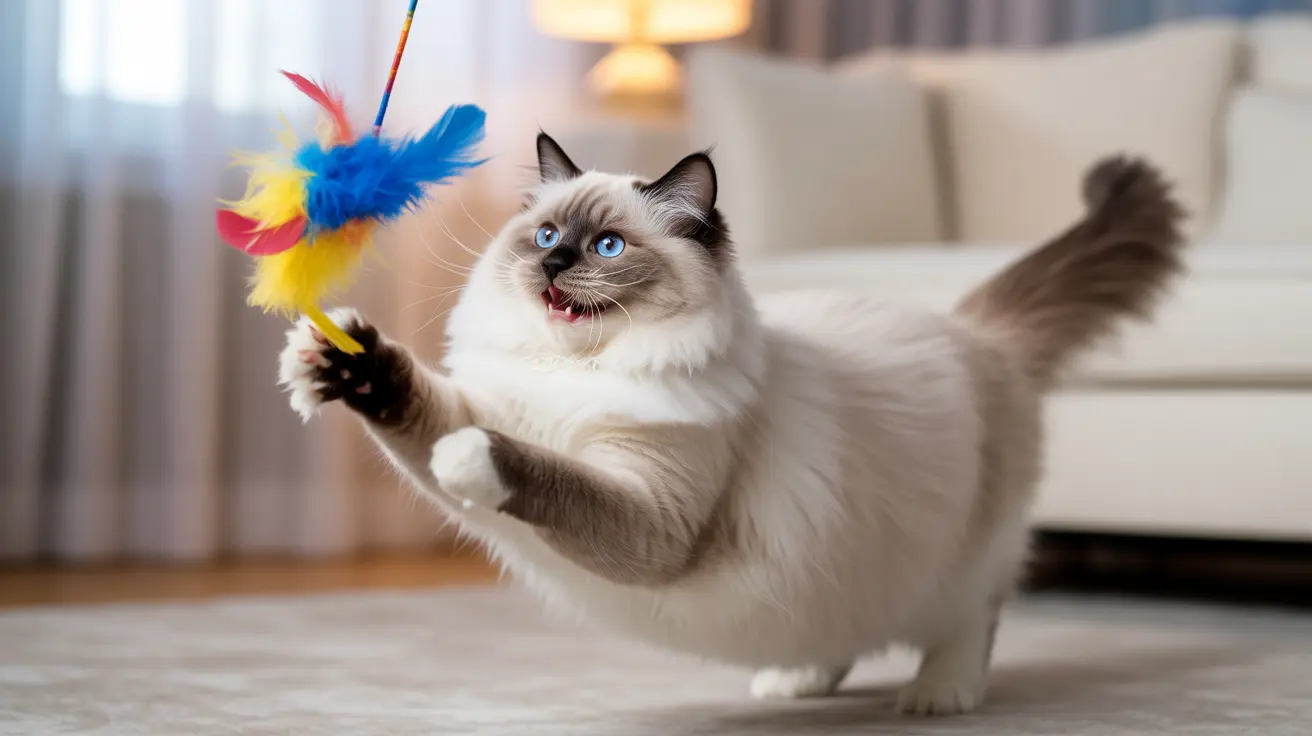Wondering how much playtime your feline friend needs to stay healthy and happy? As a cat owner, understanding your pet's play requirements is crucial for their physical health, mental stimulation, and overall well-being. Let's explore the expert-recommended guidelines for cat playtime and how to create an enriching play routine that keeps your furry companion thriving.
Research shows that structured play sessions are essential for maintaining your cat's health, preventing behavioral issues, and strengthening the bond between you and your pet. But the amount and type of play your cat needs can vary significantly based on factors like age, breed, and individual personality.
Understanding Your Cat's Daily Play Requirements
Most adult cats benefit from 20-45 minutes of total daily playtime, ideally split into 2-3 interactive sessions of 10-15 minutes each. This schedule aligns with cats' natural crepuscular activity patterns, meaning they're most active during dawn and dusk.
However, play requirements can vary significantly:
- Kittens need up to 60 minutes daily, spread across 4-10 short sessions
- Adult cats typically need 20-30 minutes daily in 2-3 sessions
- Senior cats do best with gentle 10-15 minute sessions, adjusted for their energy levels
Benefits of Regular Interactive Play
Regular playtime offers numerous advantages for your cat's health and happiness:
- Maintains healthy weight and muscle tone
- Reduces stress and anxiety
- Prevents destructive behaviors
- Satisfies natural hunting instincts
- Strengthens the human-cat bond
Creating an Effective Play Schedule
The key to successful cat play is consistency and variety. Establish a routine that includes:
- Morning play session to start the day
- Afternoon or early evening session for energy release
- Pre-bedtime play to help settle your cat for night
Use different types of toys to keep your cat engaged, such as wand toys for "air hunting," balls for chasing, and puzzle toys for mental stimulation.
Tailoring Play to Your Cat's Age and Energy Level
Different life stages require different approaches to play:
Kitten Play (Under 1 Year)
- More frequent, high-energy sessions
- Focus on developing coordination and hunting skills
- Supervision during play for safety
Adult Cat Play (1-7 Years)
- Structured sessions with varied activities
- Mix of interactive and solo play options
- Regular rotation of toys to maintain interest
Senior Cat Play (7+ Years)
- Gentler activities adapted to mobility
- Focus on mental stimulation
- Shorter sessions with more rest breaks
Frequently Asked Questions
How much daily playtime does my cat need based on its age?
Kittens need up to 60 minutes daily in multiple short sessions, adult cats require 20-45 minutes daily in 2-3 sessions, and senior cats benefit from 10-15 minutes of gentle play daily.
What are the best types of play to keep adult cats mentally and physically stimulated?
Interactive toys like wand toys, laser pointers (with a physical reward), puzzle feeders, and climbing structures provide both mental and physical stimulation. Rotate toys regularly to maintain interest.
How can I adjust play sessions for a senior or less active cat's health and energy levels?
Focus on gentle activities, shorter sessions, and more emphasis on mental stimulation. Use soft toys, lower-intensity movements, and watch for signs of fatigue. Always consult with your veterinarian about appropriate activity levels.
Why is interactive play important for preventing behavioral problems in cats?
Regular play helps reduce stress, anxiety, and boredom that can lead to destructive behaviors. It provides an outlet for natural hunting instincts and excess energy that might otherwise manifest as aggression or inappropriate scratching.
How often should I schedule play sessions to mimic my cat's natural hunting behavior?
Schedule 2-3 daily sessions, ideally during dawn and dusk when cats are naturally most active. Keep sessions short (10-15 minutes) but intense to mirror natural hunting patterns.
Remember, every cat is unique, so observe your pet's responses and adjust their play routine accordingly. With consistent, engaging playtime, you'll help ensure your cat maintains optimal physical and mental health throughout their life.






